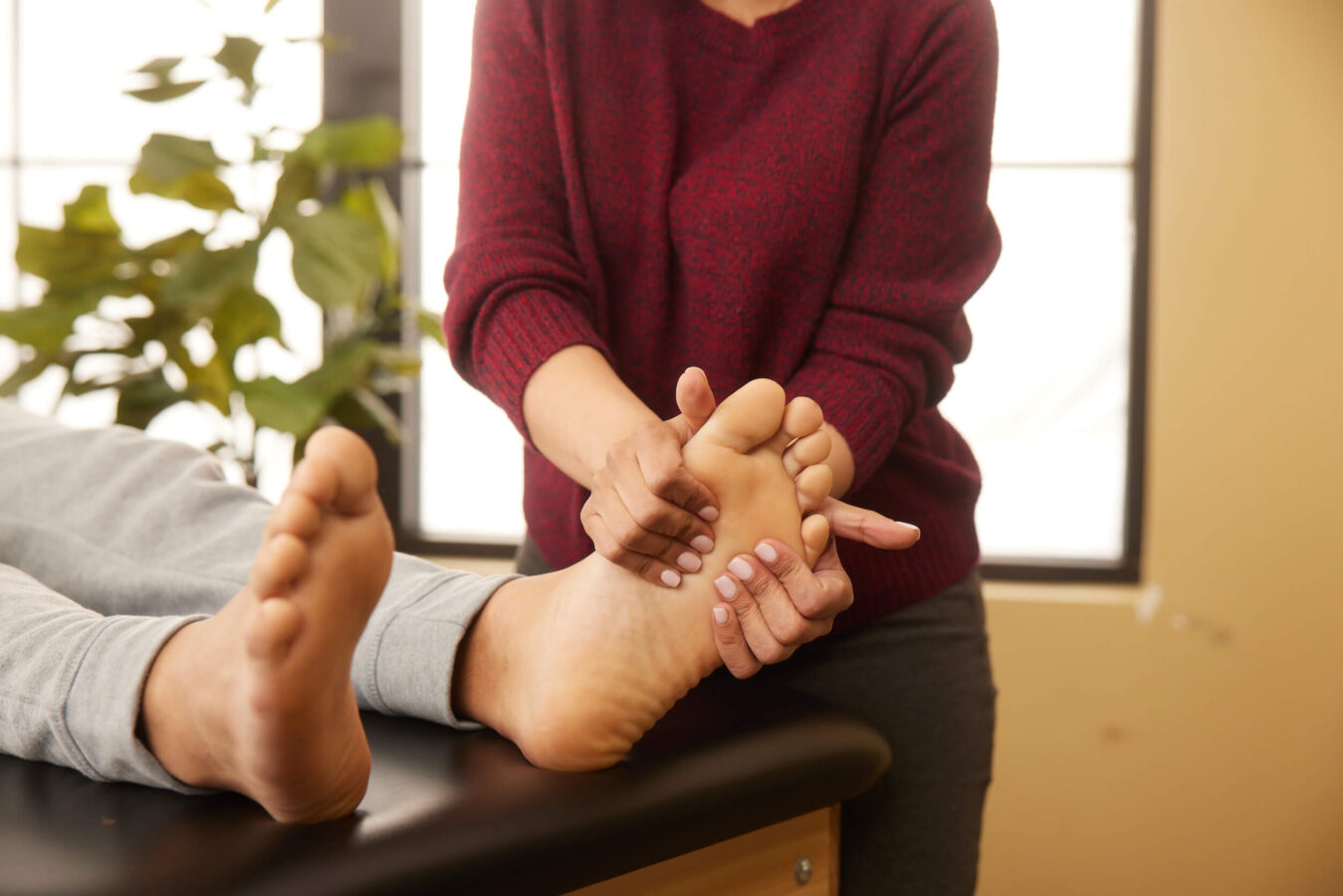
Plantar fasciitis is one of the most common orthopedic foot complaints reported to healthcare providers. One in 10 people will experience plantar heel pain and inflammation at some point in their lives. And while conservative, nonsurgical treatments are available to help patients with plantar fasciitis, the intense discomfort people experience before they find relief cannot be diminished.
To help you stay one “step” ahead of this condition we’ve compiled a list of practical tips to prevent plantar fasciitis.
Plantar fasciitis is inflammation or swelling of the plantar fascia. This is a durable, fibrous band of tissue that runs along the bottom of the foot and connects the heel bone to the base of the toes. The plantar fascia has a few important jobs. It supports the arch of the foot and absorbs the force of movement when standing, walking, and jumping while contributing to the normal biomechanics of the foot.
Overstretching, overuse, anatomical differences in the foot or leg, and sudden injuries can irritate the plantar fascia or cause it to tighten, making standing and walking painful. Other risk factors for plantar fasciitis can include: obesity, flat feet, high arches, sudden changes in activity levels, and wearing shoes with poor arch support.
Plantar fasciitis is the leading cause of pain in the heel and the bottom of the foot. People with plantar fasciitis often describe the pain as sharp or stabbing. It is often worse in the morning, or after long periods of inactivity. Pain may also be more intense when walking barefoot or in shoes with less support.
It is possible to prevent plantar fasciitis before symptoms impact your quality of life. Try these simple, practical tips for safe, pain-free movement.
Regular stretching can reduce foot pain and improve walking for people who experience plantar fasciitis flare-ups. Do these two easy, painless stretches every day to keep the plantar fascia and surrounding structures flexible.
Strengthening foot structures can also help prevent plantar fasciitis flare-ups and improve movement. These plantar fascia exercises can be done one to two times a day.
Massage helps release a tight plantar fascia and it increases blood flow to the area to promote healing and reduce inflammation—and of course it just feels good! Simply place your foot on top of a small ball, mini foam roller, or frozen bottle of water.
Slowly roll your foot over the object starting right at the ball of your foot and moving down to the area just above your heel. Do this for five to ten minutes a day on each foot.
You can also use your hands to massage the ball, arch, and heels of your feet in slow, circular motions every morning and every night. Self-massage two to three times a day for several weeks should help reduce current symptoms and prevent future plantar fascia inflammation.
Night splints or braces are medical devices that actually release tension in the ankle, foot, and heel while you sleep. Worn like a sock or boot, adjustable night splints lift the toes and elongates the plantar fascia so you can wake up pain free. When you wear a splint, you should notice the stretch—but it shouldn’t be intense or painful.
People with flat feet lack arch support and are more prone to overpronation which is when the feet lean inward when walking. These factors increase the risk of plantar fasciitis. Orthotic shoe inserts can be used to compensate for these anatomical and gait difference to ease tension on the plantar fascia in the short term. You can purchase orthotics at many well-known retailers or see a podiatrist for custom inserts created to conform to the size and shape of your feet.
Yes, we’ve mentioned the importance of strengthening and stretching your feet to reduce future bouts of plantar fasciitis. But rest is important too. Switch up your physical activity so that you are not continually stressing the same structures of the feet and legs. If you run long distances or play sports that require a lot of jumping, alternate those activities with yoga, swimming, and other low-impact activities.
If you’re reading this too late and you’re already dealing with heel pain, do not worry. Relief is available. Physical therapy to stretch and strengthen the structures of the foot and address gait and posture issues is highly-effective for patients experiencing foot pain and mobility issues.
Physical therapy combines a variety of evidence-based techniques to address the root cause of pain and mobility challenges to help you find relief and prevent symptoms from recurring. To learn more about the benefits of physical therapy for plantar fasciitis or to schedule an evaluation, find a physical therapy clinic near you.
